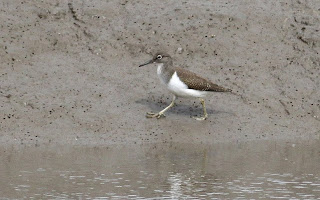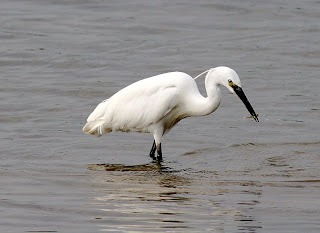There’s not a lot to report, a quick visit to Conder Green then a brief afternoon sortie to Knott End as time was of the essence today.
All the waders bar one seemed to be in the creek this morning, 2 Spotted Redshank up to their bellies, 2 Ruff, 3 Greenshank, 2 Common Sandpiper, 55 Lapwing, 28 Redshank, 4 Curlew, 1 Snipe and a lone Grey Heron, whilst over at the back of the pool a single Black-tailed Godwit played hide and seek behind the island. In the hawthorns by the screen hide a Lesser Whitethroat showed briefly but preferred to stay hidden while alarm calling. The flock of Goldfinch are rapidly depleting the thistles and I counted only 10 birds this morning.



Braides Farm is major disappointment this year and even though I have permission to survey the land it has been so dry until recently that I haven’t walked the track for months. I stopped in the gateway today where in the distance I could see a Wheatear and an overflying Little Egret.
A combined shopping expedition and walk along Knott End promenade at lunchtime was fairly productive with at least 1500 Oystercatchers coming off the river to head towards the high tide roost, with a small flock of 18 Dunlin, plus 4 Grey Plover, and then bobbing on the sea 25+ Eider. Watching from near the jetty it was interesting to note a diurnal movement of Swallows come from the Fleetwood direction, cross the estuary and then head east into the wind and follow the tideline towards Preesall, in all about 30 birds in 15 minutes. I didn’t count the gulls; suffice to say that there were several hundred Herring Gulls, a couple of hundred Black-headed Gulls, plus 8 Sandwich Terns.
Not much to report and not much in the way of pics today either but my fingers are crossed for some ringing in the morning because outside my office the wind doth subside a little.

I've just realised that tomorrow is my first birthday, the day I started the blog. How time flies when your having fun. This is the first post.
http://anotherbirdblog.blogspot.com/2009/08/well-i-did-easy-bit.html





































































